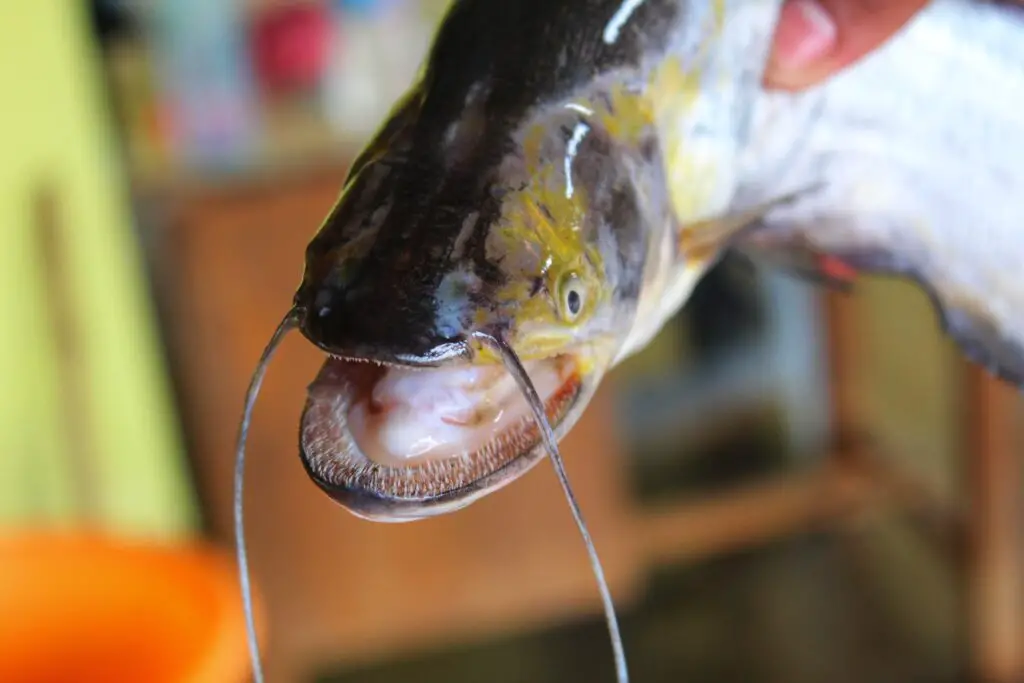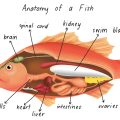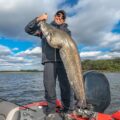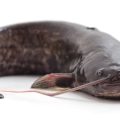Wallago Attu is a freshwater fish found in the Indian Subcontinent and other parts of South and Southeast Asia. This fish is one of the most fascinating and distinctive species, and you can catch it in various environments.
Fish provide us with essential minerals and high-quality protein, because of their scavenging tendencies, they are common in lakes, rivers, and backyard ponds. People rely heavily on this fish as a source of the animal protein they need in their diets. Wallago Attu is known as a freshwater catfish due to its diet of crustaceans, shrimp, insects, and small vertebrates. The body of a Wallago Attu fish is long and narrow.

All About Wallago Attu
Wallago Attu is a freshwater catfish from South and Southeast Asia. It is a member of the Siluridae family. It lives in the same parts of its native range as the Wallagonia leerii, which looks similar but is much bigger, and is often mistaken for it. It is different from Wallagonia leerii because its head is longer and narrower, and its dorsal fin is high and sharp, while that of Wallagonia leerii is low and round. Also, the eyes of W. Attu are above the fish’s mouth, while the eyes of W. leerii are at the same level as the mouth. This catfish is one of the fish species that people in Southeast Asia have been eating for thousands of years.
It is also called a Wallago Catfish or a helicopter catfish. Some regional names, like the Manipuri Sareng, the Odisha Balia, the Bengal Boal, the Sylheti Gual, or the Malaysian and Indonesian Tapah, are sometimes used in English. Wallago Attu live in big rivers and lakes in two different parts of the world. Fish from one group live in most of the Indian Subcontinent, and people from the other live in some parts of Southeast Asia. The species can grow up to 1 m in length (3 ft 3 in).
Wallago Attu Appearance
Wallago Attu’s head is big, and the snout is short. The body is long and tightly packed. Its mouth split very deep, and one corner goes back behind the eyes. Teeth in the jaws are wide bands, and teeth in the vomerine are in two patches.
The body of a Wallago Attu fish is long and narrow on the sides. The stomach is round. The head is bigger and lower than before. Eyes are not very big and there are two sets of barbels and the maxillary pair is longer.
The spine in the chest is weak on Wallago. The tail fin has a deep fork. The top of the body is gray or yellowish-gray, and the bottom is white. The fins, however, are gray—thin lips. The lower jaw is long and stands out more than the upper jaw. The mandible is longer than the pelvic fin, and the first arch has 24–30 gill rakers. The eye in front of the corner of the mouth is vertical to Wallagu Atto.
Consumption and Nutrition Value of Wallago Attu
Wallago Attu is a fish often used in traditional South and South Asian dishes. You can find this fish in many South and South Asia ponds, lakes, and rivers. One of the most important parts of living things is protein. Fish are an important source of animal protein for people to eat. Fish is a good source of high-quality protein and has minerals that are important for our health. Fish with a lot of protein make our faces and bodies look shiny, a sign of good health.
B-6 and B-12 in fish help make red blood cells and antibodies and keep the nervous system healthy. Minerals are essential for normal bodily functions. All animals, including fish, need them. Fish is a good way to get your body’s calcium to make strong bones and teeth. Minerals are needed to make bones, keep colloidal systems working, and make compounds like hormones and enzymes important to live. Vitamins and minerals are important for the body because organisms can’t live without them for long.
Biology of Wallago Attu
You can find Wallago Attu in big rivers, lakes, and tanks. A large, hungry, and predatory catfish that lives in shallow water with grassy edges and hides most of the time in holes along riverbanks and canals. Having a bottom of mud or silt and being deep, still, or moving slowly. Wallago Attu moves slowly and stays on the muddy or silty ground to look for food. Adults eat mostly small fish, crustaceans, and mollusks. Juveniles eat mostly insects. Oviparous, each pair is different, maybe like other animals in the same family. Lots of them mate during the warm season; they breed in the summer before the monsoons.
During the flood season, Wallago Attu is said to move to smaller streams, canals, and the floodplain. When the river or lake’s water level goes down, and the flood stops, the water moves to the deeper or larger tributaries, where it stays in deep pools until the next flood. Wallago Attu attack other fish that are better for eating. It has a big mouth, strong jaws, and a band of conical teeth that it uses to bite if touched. This fish is in danger because it has been caught too much.
Geographical Distribution
Wallago Attu is a big catfish that can get up to 45 kg and lives in India, Bangladesh, Thailand, Vietnam, Cambodia, and Indonesia. It is a great fish because it is high in nutrients, has soft meat, and has no spines inside the muscles. Due to the decline of wild populations, it is only sometimes sold on the market. Most people familiar with Wallago Attu are from India, Bangladesh, Myanmar, Java, Kampuchea, Malay, Sumatra, Thailand, Vietnam, Peninsula, and Srilanka.
Wallago Attu lives in lakes, rivers, and streams, where they can roam in fast-moving and slow-moving water. You can call it a freshwater shark because it bites and eats with great force. It eats meat and hunts other fish, so you can’t put it in a pond with other fish.
Nature and Re-production Of Wallago Attu
W. Attu is an extremely predatory fish species. Since they feed on small fish, shrimp, insects, and mollusks, you can refer to Wallago Attu as a freshwater shark. These fish are generally reserved in their natural environment and mostly exist in pairs.
In the wild, Wallago Attu spawns from June to August, right before the rainy season. It usually lives at the bottom, but it swims to the top when it’s time to breed. Unfortunately for the fish, the couples in love are so focused on each other that they are easy to catch. W. Attu was raised on fish farms in South and South-East Asian fish farms.
Conclusion
The Wallago Attu is a massive catfish weighing up to 45 kilograms and is native to the Indian subcontinent, Vietnam, Cambodia, Thailand, and Indonesia. High nutritional quality, tender flesh, and a lack of intramuscular spines make this fish a great choice for human consumption.
Wallago Attu is used to make fish curries and soups in many different cultures. The nutritional value of Wallago Attu has made it a popular staple in many countries. Wallago Attu’s versatile fatty oils and subtle flavor make it a welcome addition to many dishes.











